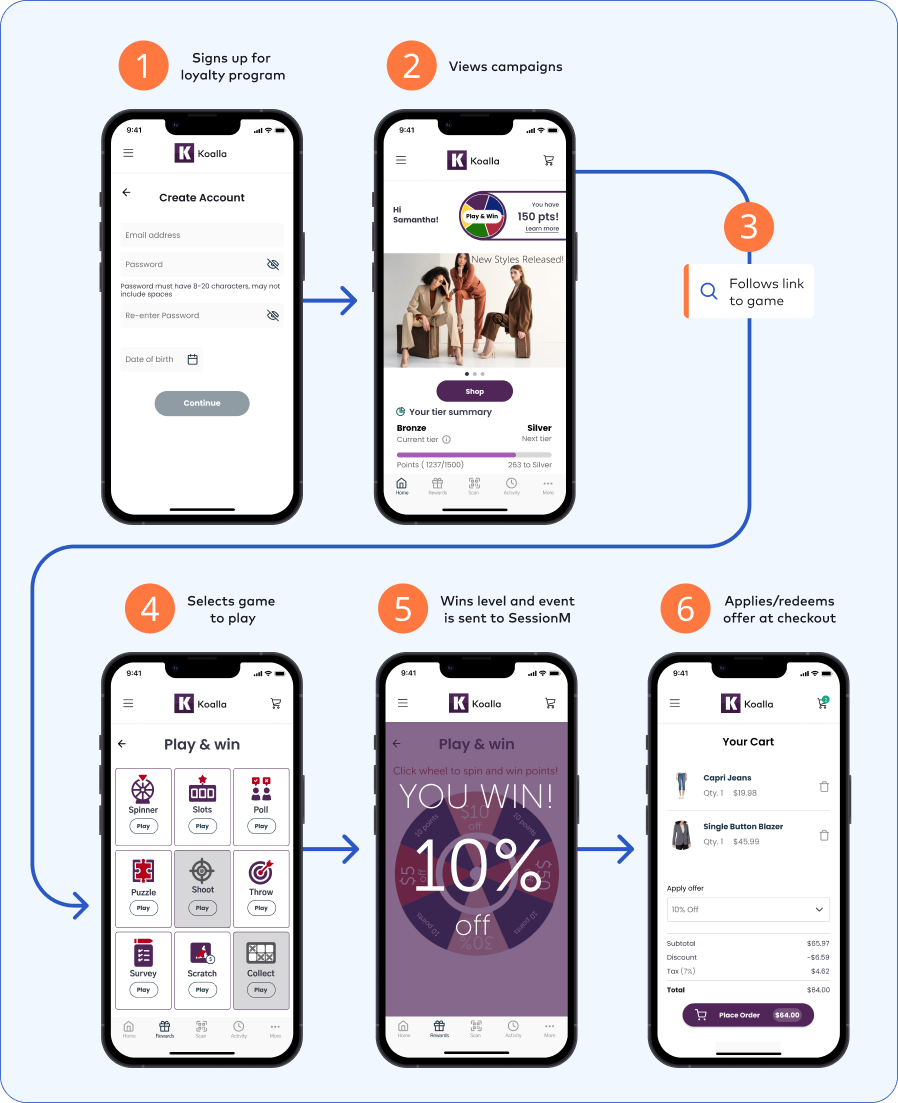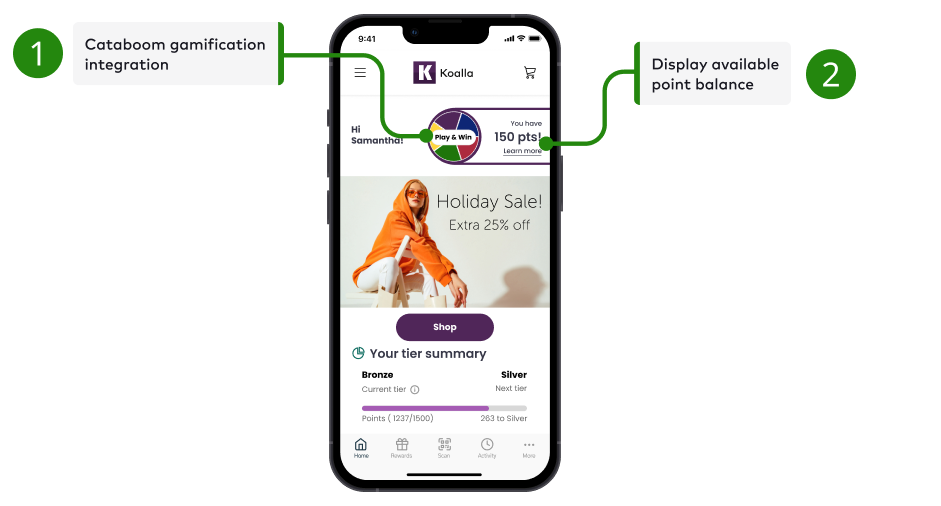Gamification
This implementation example features a new customer who plays a game to win an offer that provides a discount in their cart as they make a transaction at checkout.
Customer Experience
First, the customer signs up for a loyalty program, creating an account with basic biographical information. The data they provide during the sign-up process becomes the basis for the customer's profile on the SMP. Once the account is created, the customer can review their available campaigns. In step 3, the customer, Samantha, decides to follow a link that reveals a variety of "Play & Win" games, such as puzzles, spinners and slots (shown in step 4).

Samantha selects a game to play and wins a 10% discount offer, which is shown in step 5. She can then apply the discount on a subsequent purchase. So, in step 6, Samantha applies/redeems the offer in her cart as part of a larger purchase transaction. The cart contains jeans and a blazer, at a cost that has been discounted by 10%. When Samantha clicks the "Place Order" button and completes the transaction, she will enjoy a discount that totals out at $64.00.
APIs Enabling Customer Experience
While the sequence in the section above centers primarily on the customer's focus, each step along the way is enabled by a corresponding API that requires a specific endpoint. The endpoints that implement the mobile app screens above are available in several SessionM APIs.
Example Screen
Consider one screen typical of a mobile app implemented with the platform: The "Koalla" campaign page. Its purpose is to provide the customer with access to games that have been integrated with the app. It also provides some key data that may compel the customer to play a game and - most importantly - to shop! They can see that they currently have 150 points that can be spent in a reward store and may decide that winning a game can enhance their purchase power.

It's worth noting that this page provides a look at the customer's tier status, which provides yet another way to motivate shoppers to take actions that can move them into another tier level.
Each screen built with the SMP presents opportunities to the customer who is navigating a mobile app. Pages can offer customers a few different categories of interaction with the platform's data, including data to display, games to play and actions to take. The following table describes the endpoint and the response object fields related to each component of the mobile app that's been implemented:
| Callout | Description | Supporting API Routes | Response Object and Field |
| 1 |
Cataboom gamification integration via SMP campaign. (Optional integration add-on.) |
/priv/v1/apps/:api_key/users/:user_id/campaigns /priv/v1/apps/:api_key/external/users/:external_id/campaigns /api/v1/apps/:api_key/campaigns?auth_token-xxxx Contact your SessionM representative for Cataboom integration details. |
Not applicable. |
| 2 | Display available point balance. | /api/2.0/offers/get_user_offers
/api/2.0/lookup /priv/v1/apps/:api_key/users/:user_id?user/[user_profile]=true?expand_incentives=true |
payload.available_points PointAccount[ ].available_balance user.available_points |